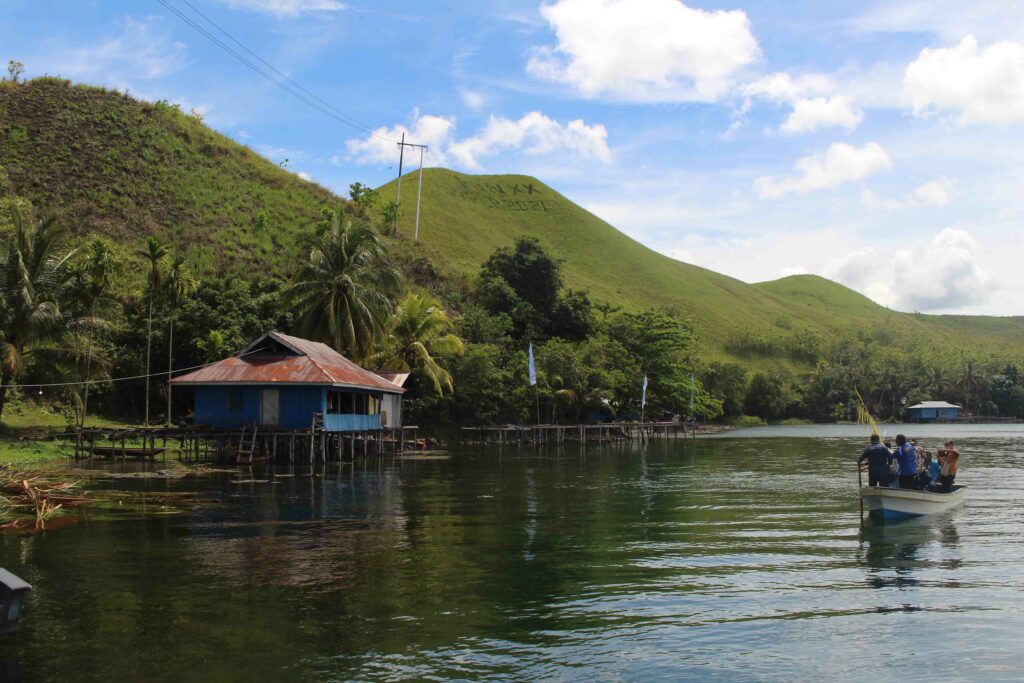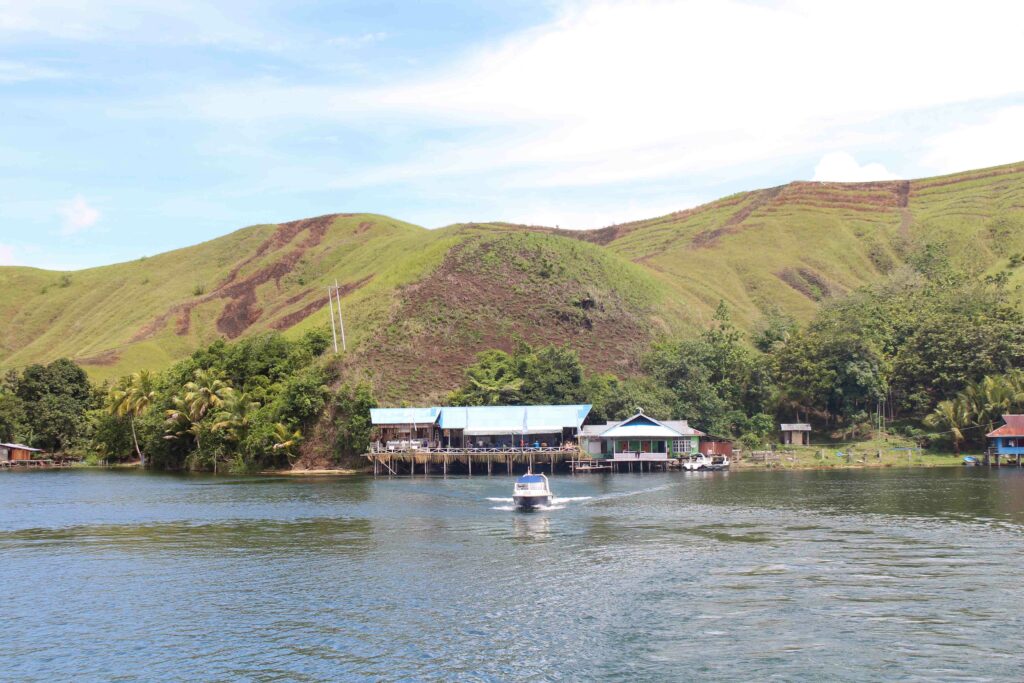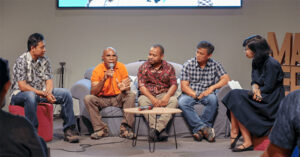
The stilt houses of the Sentani community stand sturdily above Lake Sentani in Jayapura Regency, Papua Province. The primary material for these houses is the sowang tree. Building stilt houses, both as homes and traditional houses, has been a tradition passed down through generations of the Sentani ethnic community.
There are practical reasons for constructing stilt houses above the lake. One reason is the easy access to clean water directly from the lake. Additionally, the houses are closer to food sources such as the sago trees at the lake’s edge, and it is easier to catch fish and snails.
Also read: Sago, Life for People in Sentani Lake
The Advantages of Sowang Trees for Stilt House Construction
Sentani stilt houses are typically inherited by families over generations, necessitating durable materials that can withstand prolonged exposure to water. The sowang tree is the preferred timber for building these houses.
The Sentani and Tabi communities generally use the sowang tree (Xanthostemon novoguineensis) as the main material for their stilt houses. This tree, native to the Cycloop Mountains, is robust and ideal for house pillars. Sowang wood has several advantages over other types of wood, including its natural durability. It contains extractives that are toxic to organisms such as fungi, termites, and marine borers. Its durability has been proven through graveyard tests, biological decay tests in laboratories, and marine borer tests. According to research by Jamlean (1999) and Manase (2000), sowang wood used for stilt house pillars can last over 50 years. Additionally, research by Wilujeng in 2010 found that sowang wood is fire-resistant, making it popular for charcoal in the restaurant business.
Sowang trees are found in Jayapura City and Jayapura Regency, especially around the Cycloop Mountains, up to an altitude of 450 meters above sea level. These trees can reach a height of 40 meters with a diameter of 80 cm and are classified as strong wood with a high density.

Declining Population of Sowang Trees
The sowang tree is an endemic species in Papua with limited scientific data. It is becoming increasingly rare, leading to fewer studies on the wood. Biologically, sowang has a low regeneration rate, contributing to its declining population.
Human activities that damage its habitat further threaten the sowang tree’s role as the primary material for Sentani houses. Sowang trees thrive in lowland areas at altitudes of 450 meters above sea level. These areas are often converted into farms and settlements.
According to Mongabay, Sri Wilujeng, an academic researcher on sowang, noted that the IUCN (International Union for Conservation of Nature) does not list sowang, although it is heavily exploited and has a low regeneration rate.

“I couldn’t find sowang listed on the IUCN, even though it’s heavily exploited and regenerates very slowly,” said Sri.
Indigenous Efforts to Preserve the Sowang Tree
For the indigenous people living in the Cycloop Mountains, the sowang tree plays a crucial role in their lives. They have traditional ecological zones regulated by customary laws, ensuring sustainable and responsible logging. The community knows which trees can be harvested and which are protected.
Also read: Cultural Approach to Save the Land of Papua
Preserving the sowang tree should be closely linked to conserving the Cycloop Nature Reserve and maintaining the traditions of the indigenous Sentani people living in the area.




